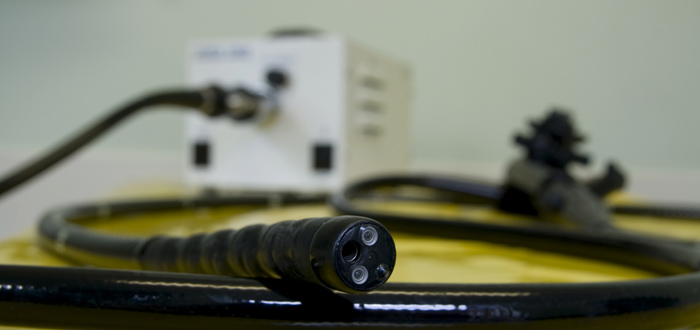Endoscopic Retrograde Cholangio-Pancreatography (ERCP) combines the use of endoscopy and x-ray (Fluoroscopy) to treat or investigate problems within the bile duct or pancreatic duct.
You will not be able to eat for six hours prior to an ERCP. Anaesthetic and sedatives will be used to minimise discomfort, though you will remain awake throughout. You will be given the option of an alternative form of sedation (propofol) with an anaesthetist present which will be discussed with you when seen in clinic.

The doctor will pass an endoscope through the oesophagus, through the stomach and into the duodenum where the common opening to the bile and pancreatic duct is located. Air is pumped down the endoscope to inflate the stomach and duodenum making it easier for the doctor to examine. Dye will be passed through the endoscope and injected into the ducts. The dye is designed to show up on x-rays and will reveal any blockages or narrowing of ducts. The ERCP may also be used to treat disorders such as blockages or gallstones.
During the ERCP gall stones can be removed from the bile duct and blockages treated by placing stents (plastic or soft metal tubes) through the narrowed area.
This is an outpatient procedure though some recovery time will be needed as the sedatives can take an hour or so to wear off. Once this has happened you are able to leave the hospital.
You will need to have an escort to take you home and someone who is able to stay with you. You will be advised not to drive for 24 hrs.
For more information on investigating symptoms click here

